
3-METHYL-2-CYCLOHEXEN-1-OL synthesis
- Product Name:3-METHYL-2-CYCLOHEXEN-1-OL
- CAS Number:21378-21-2
- Molecular formula:C7H12O
- Molecular Weight:112.17

591-49-1
154 suppliers
$10.00/1g
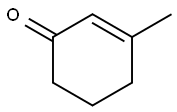
1193-18-6
182 suppliers
$6.00/1g

21378-21-2
60 suppliers
$54.70/1g
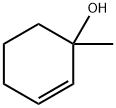
23758-27-2
5 suppliers
inquiry
![1-methyl-7-oxabicyclo[4.1.0]heptane](/CAS/GIF/1713-33-3.gif)
1713-33-3
57 suppliers
$28.00/250mg
Yield: 32 %Chromat. , 27.5 %Chromat. , 16.3 %Chromat. , 24.2 %Chromat.
Reaction Conditions:
with FeCl3(5-chlorobenzotriazole)2·2(5-chlorobenzotriazole);dihydrogen peroxide in water;acetonitrile at 26; for 2 h;Inert atmosphere;Reagent/catalyst;Time;
Steps:
2.2. Catalytic experiments
General procedure: All substrates were purchased from Aldrich, in their highest commercial purity, stored at 5 °C and purified by passage through a column of basic alumina prior to use. A 30% aqueous solution of H2O2 was used as oxidant. For the catalytic evaluation, H2O2 (30%)diluted in MeCN (1:10 v/v) was slowly added (within a period of10 min) to an MeCN solution of the iron(III) complex (the catalyst) and the substrate under an Ar atmosphere at room temperature (26 °C). Acetophenone or bromobenzene were used as internal standard. Catalytic reactions started by adding the oxidant into the reaction mixture. The catalyst:oxidant:substrate ratio was 1:20:1000 μmol for cyclohexene, 1-methylcyclohexene, cyclooctene, limonene, cyclohexane and n-hexane, and 1:50:1000 μmol for styrene, trans-β-methyl styrene and cis-stilbene. The total volume of the catalytic reaction solution was 1 ml. The large excess of the substrate was expected to minimize over-oxidation of oxidation products and to protect the catalyst from oxidative destruction. The oxidant was added slowly in order to minimize potential iron-catalyzed H2O2 decomposition via catalase activity.The progress of the catalytic reaction was monitored using GC-MS by removing small samples of the reaction mixture. GC analysis was performed using a 8000 Fisons chromatograph witha flame ionization detector and a Shimadzu GC-17A gas chromatograph coupled with a GCMS-QP5000 mass spectrometer. The yields reported herein are based on the amount of H2O2 oxidant converted into oxygenated products. Reactions were complete within 6 h. In some cases, oxidations catalyzed by [FeCl3(5ClbtaH)2]*2(5ClbtaH) were accomplished within 2 h (vide infra). To establish the identity of the products unequivocally, the retention times and spectral data were compared to those of the commercially available compounds. Black experiments revealed that no oxidative reactions took place without the catalyst.
References:
Anastasiadis, Nikolaos C.;Bilis, George;Plakatouras, John C.;Raptopoulou, Catherine P.;Psycharis, Vassilis;Beavers, Christine;Teat, Simon J.;Louloudi, Maria;Perlepes, Spyros P. [Polyhedron,2013,vol. 64,p. 189 - 202]

1193-18-6
182 suppliers
$6.00/1g

21378-21-2
60 suppliers
$54.70/1g

591-49-1
154 suppliers
$10.00/1g

1193-18-6
182 suppliers
$6.00/1g

21378-21-2
60 suppliers
$54.70/1g
![1-methyl-7-oxabicyclo[4.1.0]heptane](/CAS/GIF/1713-33-3.gif)
1713-33-3
57 suppliers
$28.00/250mg
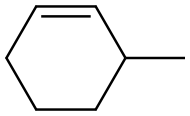
591-48-0
61 suppliers
$103.00/25mL
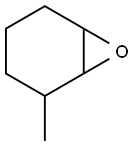
5410-22-0
0 suppliers
inquiry

1193-18-6
182 suppliers
$6.00/1g

21378-21-2
60 suppliers
$54.70/1g
![2-[N-(diphenylphosphinothioylamino)-C-methyl-carbonimidoyl]thiophene](/CAS/20180531/GIF/6610-21-5.gif)
6610-21-5
3 suppliers
inquiry
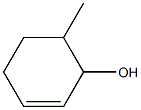
3718-56-7
0 suppliers
inquiry
![Ethanamine, N-[(3,5-dichlorophenyl)methylene]-2,2-diethoxy-](/CAS/20210305/GIF/1000210-73-0.gif)
1000210-73-0
0 suppliers
inquiry

21378-21-2
60 suppliers
$54.70/1g